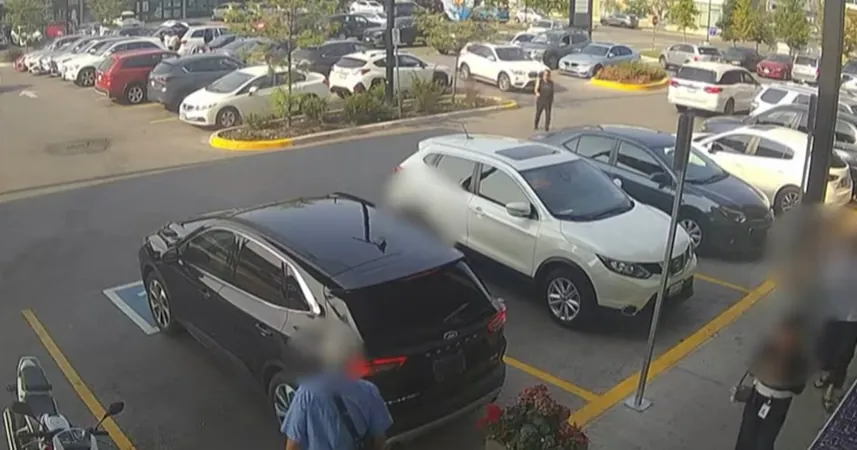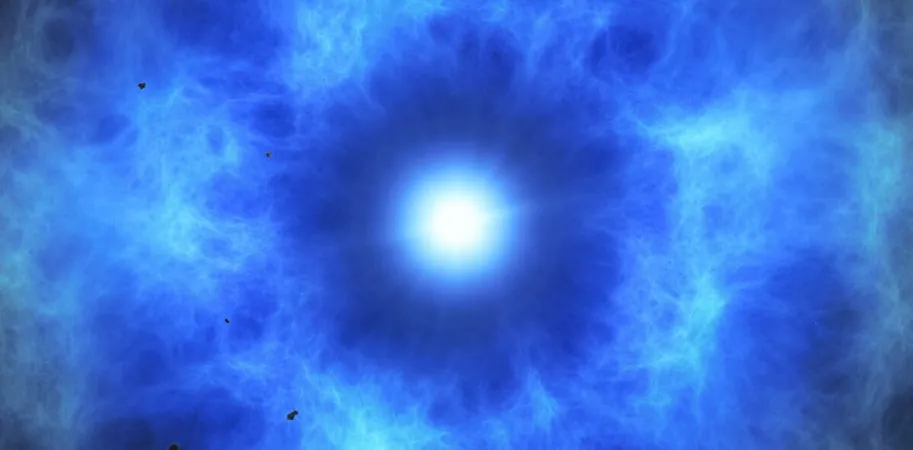
Astronomers Uncover Stunning Details of a Cosmic Radio Fossil in the Ophiuchus Cluster!
2025-09-04
Author: Jacques
A Deep Dive into the Ophiuchus Galaxy Cluster
Astronomers have made groundbreaking discoveries using the upgraded Giant Metrewave Radio Telescope (uGMRT) to probe the Ophiuchus galaxy cluster, an impressive galactic formation located a staggering 390 million light-years away in the constellation Ophiuchus. This study, published on August 26 in The Astrophysical Journal, reveals remarkable new insights into a vast radio fossil lurking in this cosmic neighborhood.
What Exactly Are Fossil Radio Lobes?
Fossil radio lobes are mysterious, expansive areas of radio emission that remain as echoes of past bursts of activity from the supermassive black holes residing at the centers of galaxies. Typically found at the outskirts of galaxy clusters, these remnants can be enormous yet often appear faint and diffuse, posing a challenge for researchers.
The Quest for Clarity in Ophiuchus
Previously spotted by astronomers, the Ophiuchus cluster contains a colossal radio bubble thought to be a fossil radio lobe, although its characteristics have been largely ambiguous until now. To clarify its structure, a team led by Simona Giacintucci from the Naval Research Laboratory embarked on a meticulous investigation using uGMRT across two frequency bands: 125–250 MHz and 300–500 MHz.
Revelations from the Deep Radio Observations
The detailed observations unveiled intricate spatial features within the fossil lobe, including slender radio filaments stretching between 16,000 and 33,000 light-years, and elongated filaments that could reach up to 330,000 light-years. These fascinating structures are embedded in the softer emissions of the lobe, drawing attention to their complexity.
What’s Causing These Strange Filaments?
The astronomers noted that these filaments exhibited a notably steep spectral index, much steeper than the more uniform emissions surrounding them. While their exact origin remains a puzzle, researchers theorize that they may indicate areas where magnetic fields have been intensified through magnetohydrodynamic turbulence, consequently accelerating the aging process of relativistic electrons, leading to dramatic changes in their synchrotron emissions.
Unraveling the Age of the Fossil Lobe
Further analysis revealed a spectral break in the brightest part of the fossil lobe, closest to the cluster's core. This significant finding allowed the team to estimate the radiative cooling age of the lobe to be approximately 174 million years. Such findings raise intriguing questions about how the radio emissions from this ancient cosmic entity can still be detectable today.
The Impact of This Discovery
This study not only sheds light on the enigmatic fossil radio lobe in the Ophiuchus cluster but also enhances our understanding of the lifecycle of these galactic structures, opening up new avenues for research in astrophysics. As scientists continue to unravel the mysteries of the cosmos, findings like these remind us of the astonishing complexities present in our universe.









 Brasil (PT)
Brasil (PT)
 Canada (EN)
Canada (EN)
 Chile (ES)
Chile (ES)
 Česko (CS)
Česko (CS)
 대한민국 (KO)
대한민국 (KO)
 España (ES)
España (ES)
 France (FR)
France (FR)
 Hong Kong (EN)
Hong Kong (EN)
 Italia (IT)
Italia (IT)
 日本 (JA)
日本 (JA)
 Magyarország (HU)
Magyarország (HU)
 Norge (NO)
Norge (NO)
 Polska (PL)
Polska (PL)
 Schweiz (DE)
Schweiz (DE)
 Singapore (EN)
Singapore (EN)
 Sverige (SV)
Sverige (SV)
 Suomi (FI)
Suomi (FI)
 Türkiye (TR)
Türkiye (TR)
 الإمارات العربية المتحدة (AR)
الإمارات العربية المتحدة (AR)